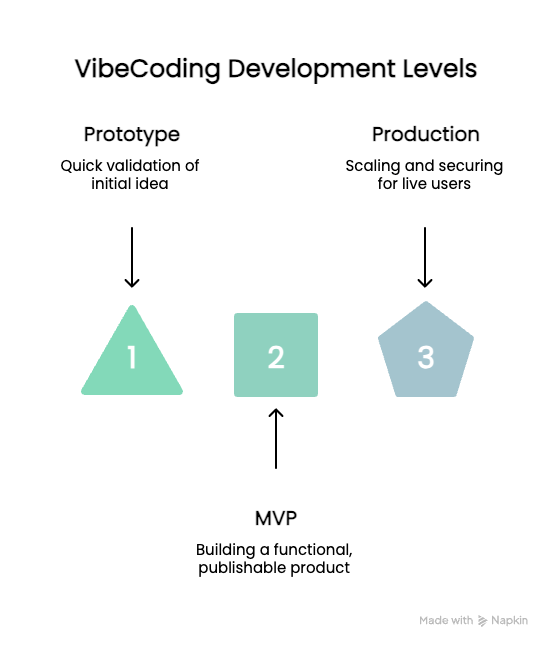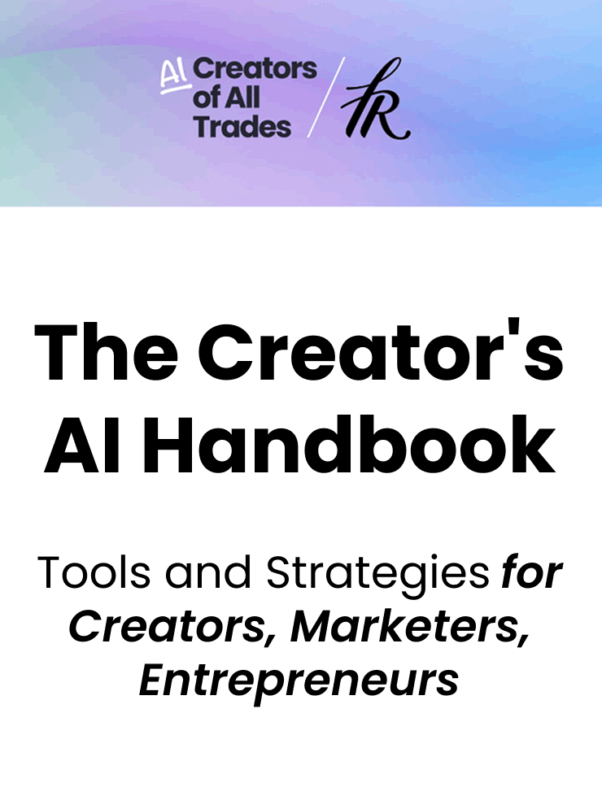The promise of a “dream app in minutes” is everywhere. But the reality is a bit more complex. What begins as a quick, AI-powered prototype must evolve into something far more robust if you want it to be a real product.
Over the last few months, I’ve gained a lot of experience doing exactly this with an app called LinCal, and I want to share my learnings on how to think about this advanced process.
VibeCoding emerged as the term describing rapid prototyping with generative AI, allowing anyone, regardless of non-present software development skills, to create apps. It’s about leveraging AI to take significant shortcuts in product development, enabling you to validate ideas and build something functional quickly.
But it’s not a one-size-fits-all solution. There are different levels and viewpoints on vibecoding, and what works for a quick prototype won’t work for a scalable, production-ready app. Let me walk you through these levels, using LinCal as a practical example.

Level 1: The “Just Get It Done” Prototype
This is the earliest stage of VibeCoding. Your goal is to just get a working prototype that represents your idea and helps you get feedback. It’s not something you want to share publicly yet, but it’s good enough to send to friends, followers, and co-workers to validate an idea and see if there’s any interest.
For this stage, vibecoding apps like Lovable or Bolt are perfect. They handle all the technical details in the background, allowing you to focus solely on the idea.
The LinCal Story: My first prototype of LinCal took only about two hours to create. My goal was simple: build a basic version that could connect to Linear with a personal API key and display tasks on a calendar. Using a tool like Lovable, I quickly got a functional app that I started using internally with my team to discuss our content marketing plans. The feedback was immediate and valuable.
Level 2: The MVP – Building for the Future
Once you get some confirmation that your idea might be working, you’ll want to move to the next level and turn your rough prototype into a Minimum Viable Product (MVP).
For the MVP, you have to be a bit more serious. This could turn into a real published product that goes into production at some point and might be around longer than your typical side project. The foundation needs to be better, even if development is slower. You may want to consider a more professional tool, such as Replit or Cursor AI, for this process. At this stage, you’re focused on not repeating the same mistakes you made with your first quick prototype.
The LinCal Story: I sensed genuine interest in LinCal, especially from discussions within the Linear Slack community. So, I decided to build a more serious MVP. I added more features and improved the UI. I did all of this within Replit, got a custom domain, and published it publicly. I’m currently in the midst of moving over from Replit to Cursor AI to build a better technical foundation for the product’s future.
A demo of LinCal – built with Replit
Level 3: The Production-Ready, Scalable App
If Level 2 convinces you that you’re on the right track, you can move to Level 3 of VibeCoding. At this point, you want to set up your project to scale, be marketed, and attract more users.
This is where “classic” VibeCoding alone won’t get the job done. While AI can still help, you’ll have to tackle more complex problems that aren’t solvable with just prompting. An experienced developer becomes an invaluable sparring partner—someone who can review the code you created with AI, take a look at security, do pen testing, and handle all the stuff that turns your MVP into a production-ready app that can be developed long-term. A seasoned developer uses AI as a tool as well, but their expertise allows them to prompt and utilize it at a much deeper level.
You have to think about a proper deployment strategy and set up GitHub or GitLab. As soon as you have users on a live product, you can’t just constantly push updates to production without a proper plan.
The LinCal Story: I’m now slowly moving LinCal into Level 3 VibeCoding. When I think about going into production, security and privacy are top of mind. Performance and scaling are suddenly a big topic. You can still do a lot of AI prompting around these areas, but you also need experienced input from a seasoned developer. The basics like GitHub and a deployment strategy are set up, but I’ve realized you can’t just blindly push to production.
The VibeCoding Takeaway
VibeCoding, as a term, sounds cheesy, but its impact is not. It helps you take massive shortcuts at the beginning of a project to quickly validate an idea, just like I did with LinCal. However, if you take it seriously and move to the next level, development will naturally slow down as you have to learn numerous new technical concepts.
Still, regardless of which level of VibeCoding you are on, AI is your co-pilot. Instead of browsing hundreds of Reddit posts or drowning in browser tabs, you can set up a highly customized AI engine that understands your project and guides you through the process, speeding up both your product development and your personal learning.


